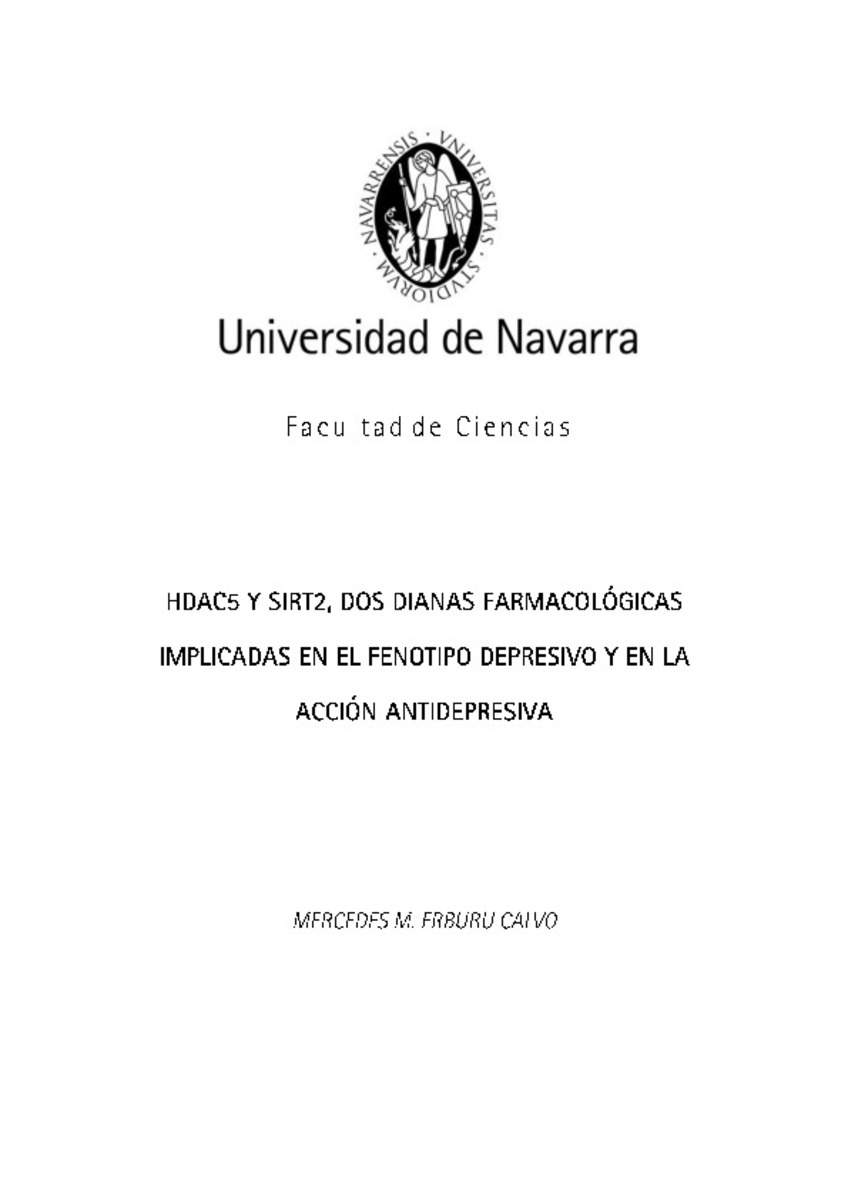HDAC5 y SIRT2, dos dianas farmacológicas implicadas en el fenotipo depresivo y en la acción antidepresiva
Palabras clave :
Materias Investigacion::Farmacia::Farmacia y farmacología
Farmacología experimental
Neuroquímica
Respuestas del comportamiento
Fecha de publicación :
13-jun-2017
Fecha de la defensa:
19-oct-2016
Cita:
ERBURU, Mercedes Micaela. “HDAC5 y SIRT2, dos dianas farmacológicas implicadas en el fenotipo depresivo y en la acción antidepresiva”. Tordera, R. M. y Puerta, E. (dir.). Tesis doctoral. Universidad de Navarra, Pamplona, 2016
Aparece en las colecciones:
Estadísticas e impacto
0 citas en

0 citas en

Los ítems de Dadun están protegidos por copyright, con todos los derechos reservados, a menos que se indique lo contrario.







